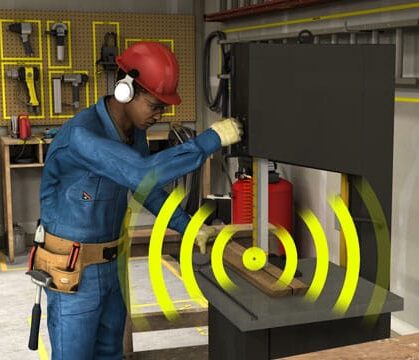June 16, 2015

How to Make Safety Training More Fun and Engaging: Tips from Safety Managers
Industry:
Solution:

What do YOU do to make your safety training at work fun and engaging for employees?
Recently, we posted that simple question into a number of LinkedIn groups that deal with safety and/or EHS: "What do you do to make your safety training more fun and engaging for your employees?"
A large number of safety professionals chimed in to share their safety training tips, and we've collected their replies in this article. It's interesting to read the replies and to see how many of them work along similar themes. If you're looking for ways to create fun, enjoyable, memorable, and impactful safety training at your work, we think you'll find some good ideas below.
So, let's get to it. Here's how to make safety training more fun and engaging, with stories and tips from real-life safety managers and trainers.
Below are some tips for making safety training more fun, engaging, and effective.
[optin-monster slug="ydheitmvhxurgh0b70t3"]
Games, Competition, and Rewards
A number of safety professionals said they tried to include some form of game, competition, and/or reward in their safety training. We've included some of those replies below.
One safety trainer used Jeopardy-style games, competition, and candy bars.
Another also used a TV game show as a model (this time The Weakest Link):
"I teach Site Manager Safety training and I find quizzes work really well we have a show in England called the weakest Link and I base the quiz on that. It's a process of elimination everyone in the group gets 3 lives and you keep going around the table if someone gets their question wrong the person next to them gets the chance to answer it. . I do quizzes on my SMSTS courses and it really gets them going we have a lot of fun, and information tends to stick, very similar to the way they do it on the weakest link."
Here's another for games, competition, and rewards awarded during safety training:
This suggestion makes a few points but stresses the use of puzzles and problem-solving:
Here's another safety professional for games and rewards (and giving employees some public credit!):
[optin-monster slug="nhfzfxq0hdm2vvxcw3lf"]
Humor in Safety Training
Quite a few people brought up the importance of humor. We like safety training humor ourselves--check some of our humorous safety training blog posts.
Here's a safety professional who uses humor, including photos of safety mistakes, to get employees to explain the RIGHT way to do things.
I could have put the comment below from another safety professional with "active participation" but I'll put it here with humor:
I'll place this one under good-natured humor:
Another for humor and engagement in safety training--but mostly humor:
Here's a good example of using humor in mandatory safety training and here are some good tips for using humor in training.
Active Participation in Safety Training
Many of the replies involved different forms of having the trainees be active participants in the training. That's smart, because active learning is a key adult learning principle.
Here's one person who replied with a neat example about having workers film things with video cameras.
Yet another EHS manager used video (he shot it), active participation by the employees, and some humor to create fun safety training:
Here's another advocate of getting the employees involved, this time with inquiry-based training (which has come up before--don't forget to see our articles on Scenario-Based Training as well as Storytelling, Scenarios & Training):
This person offered lots of great ideas for safety training. We'll put these under "active participation" but they span the gamut:
Here's another for active participation in safety training. This safety professional makes the good point that it's worthwhile making sure everyone knows one another (solid!):
Here's another fan of creating an active, scenario-based, problem-solving situation for the workers during safety training. Again, this person suggests the use of self-shot video, which comes up a lot too.
A video-based scenario elearning courseware that provides exaggerating/dramatic negative and positive feedbacks upon learners choice of decision.
The story scenario can go inline with what the learner goes through in his/her daily life at work. This video-based scenario will captivate the learners' attention and engage them throughout with various safety scenarios. This elearning material can either be
● utilise at the learners' own time
● use during a face to face training session to get the whole class participate
● use as a challenge among groups during the class
Two-Way Discussions in Safety Training
It seems basic enough, but often we forget to have discussions instead of monologues during safety training. Having two-ways discussions is yet another way to incorporate adult learning principles and improve your safety culture.
Here's one who hit that nail on the head:
Here's another voice in favor of two-way discussions in safety training:
Here's another who likes active discussions (along with an "icebreaker" event at the beginning):
The wise emphasis on two-way discussions in safety training above are great reminders that in many cases, employees know more about the real hazards, risks, and controls on a job than safety professionals or managers do. To give some additional consideration to these issues, consider reading some of the following articles:
- Safety and the Learning Organization
- 9 Things to Know about HOP
- HOP, Operational Learning, and Learning Teams
- How to Conduct a Learning Team for Safety Incident Investigations
- What Is Safety Differently?
- Safety Differently and Safety Training
Demonstrations During Safety Training
A common thread was the importance of giving real-life demonstrations to make the training more fun, engaging, and relevant. This is another that could have gone into "active participation" but the demonstrations really come alive here.
Storytelling in Safety Training
Storytelling is a proven way to capture people's attention, and it came up in this aspect as well.
Here's one EHS director who knows the value of a good story well told, plus interaction and a bit of show and tell:
"When holding Safety meetings it is always fun to have a story to go with the topic. It could be something that happened to the trainer at home or traveling or an observation. Make it interesting to hold the attention span. engage with the employees as you are training to get their involvement.
Have a meeting like in school with show & tell; interaction with a new face like one of your vendors participating is another great way to discuss your topics."
Here's an extended discussion of storytelling in training, and here are six tips for effective training (with storytelling being one).
Stressing the Importance of Safety
It never hurts to let people know safety is serious.
This person makes more than one point, but leads with the serious angle:
Keep Safety Training Job-Specific and Relevant
It's always a good idea to keep job training specific and relevant, and that came up here too.
This guy makes a few points, and I could have included one in the "different types of software" section below, but we'll put his comments here:
Review, Feedback, and Evaluation of Safety Training (Continuous Improvement)
Some touched on the importance of reviewing training itself, getting feedback, and evaluating the training.
Here's one safety professional on that theme:
Dr. Will Thalheimer's does a nice job of stressing the importance of feedback in training and how to do it and the ANSI/ASSP Z490.1 national standard on EHS training also stresses the importance of review, evaluation, and continuous improvement.
Speaking Their Language During Safety Training
It's important to speak the correct language (like English and Spanish), of course. But it's also important to speak in a way that your employees relate to. Our list of tips for writing training materials can help you choose the appropriate type of language to use during safety training.
Here's one trainer on that issue:
Different Types of Software for Safety Training
Some suggested alternative presentation software intended to improve the training and/or make it more active.
For example, this health and safety specialist suggested TurningPoint, Prezi, and YouTube videos. Along with our old stand-by, competition:
A learning management system, or LMS, is another software application that can really help you administer your safety training program. And you can use an e-learning authoring tool to make your own safety training online courses.The short video below explains what an LMS is and how it can make safety training more efficient, effective, organized, and inexpensive.Conclusion: There Are LOTS of Ways to Make Safety Training More FunSo that wraps that up, at least in terms of tips from our repliers. If you notice, a lot of the tips focused on creating an active learning experience for the workers and getting them more involved. And doing something that was a little fun now and again came up a lot too.But what about you? What are your tips for safety training and safety compliance? We'd love to read your comments in the section below.
[optin-monster slug="fukmmyax6yjgv2yplrvg"]
Explore our software solutions designed to help your organization succeed
Request a Demo






